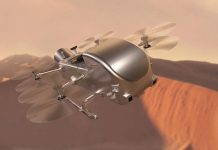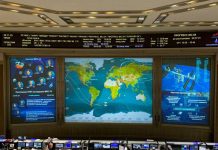The data could help guide future lunar landings as part of NASA’s Artemis program.
NASA engineers have simulated the effects of landing on the lunar surface in preparation for sending astronauts to the Moon on upcoming Artemis missions. The animation, created on NASA supercomputers, shows the effects of the Apollo 12 landing on the Moon, namely the effect caused by kicking up lunar dust.
Using supercomputer models, the interaction of lunar regolith and hot gas jets ejected from the spacecraft engine during landing and takeoff was studied.
Landing on the Moon is a complex mission in which the spacecraft uses rocket engines to control and smoothly descend to the lunar surface in defiance of gravity.
The model shows how Apollo 12’s engine jets interacted with the lunar surface during landing in November 1969. The lateral force causing shear stress on a flat surface caused the regolith to “ripple” on the lunar surface.

NASA supercomputers show how Apollo 12 landing kicked up lunar dust
The animation shows the last half minute of the vehicle’s descent before the engine shuts down. The changing radial patterns reflect the intensity of shear stress, with lower levels indicated in dark purple and higher levels indicated in yellow. As the craft descends, the animation shows the rapid increase in shear stress exerted on the lunar surface. This can cause mixing of layers of regolith – fine loose dust and rocks on the surface of the Moon, and as a result lead to erosion.
In addition to visual obstructions and possible damage to equipment, dust plumes can also complicate navigation and the operation of scientific instruments.
As part of the Artemis program, which aims to establish a long-term human presence on the Moon, NASA aims to explore wider areas of the lunar surface than ever before. This involves the use of larger vehicles and more powerful engines than those of the Apollo program.
Although Apollo craft did not create craters, larger craft may have erosive effects and cause cratering at the landing site, which could pose risks to the stability of the craft and crew.
As mission planners strive to establish a sustainable presence on the Moon, they will need to consider how future vehicles will interact with the lunar surface in uncharted terrain. NASA officials emphasize that these computer simulations can be used to predict the consequences of landing future missions in order to minimize risks to vehicles and crew.




